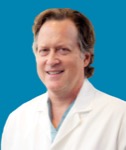WASHINGTON—Autologous skin cell suspension, colloquially known as “spray-on skin,” is an effective and safe means of closing full-thickness wounds, according to findings presented at the 2024 annual meeting of the American Surgical Association. The study is the largest single-center analysis to date of ASCS, which only last year was approved for full-thickness wound closure by the FDA after being approved for partial-thickness thermal wounds in 2018.
“When I moved to my current practice in 2022, I’d heard anecdotally that ASCS could be used for full-thickness defects, so I introduced it into our algorithm for wound closure,” explained Scott Hultman, MD, the chair of the Department of Plastic and Reconstructive Surgery at WakeMed Health and Hospitals, in Raleigh, N.C., who presented the findings. “In 2023, the FDA caught up to the clinical usage of the product, so I thought it was important to share our experience with the product to inform other practicing surgeons.”
Dr. Hultman and his co-investigators kept a prospective registry of patients treated with ASCS, and conducted a retrospective analysis after accruing 50 cases. “To my knowledge, there’s only been one randomized controlled trial, published in January [J Trauma Acute Care Surg 2024;96(1):85-93], that included about 60 to 70 patients from multiple centers, so 50 seemed like an appropriate cutoff for our analysis,” Dr. Hultman explained.
The 50 patients studied all had full-thickness defects including burns, necrotizing infections, crushing, open abdomen injuries and degloving injuries. Each was treated with a bilayer technique combining ASCS sprayed over a widely meshed, split-thickness skin graft in a 3:1 ratio.
At four, eight and 12 weeks, wound closure had been achieved in 76%, 94% and 98% of patients, respectively. Out of 43 patients with severely injured or infected limbs, 42 were able to be salvaged. The mean size of the donor site was 215 cm2, with a mean area grafted of 437 cm2—a reduction of 51%. The investigators also observed a low incidence of hypertrophic scarring.
“The dramatic reduction in the size of the donor site is the primary benefit,” Dr. Hultman said. “I’ve not met a single patient who wants a large donor site when harvesting skin grafts.”
Dr. Hultman said another key benefit of ASCS is that it allows any competent, board-certified plastic and reconstructive surgeon to close full-thickness wounds without sending their patients to tertiary centers.
“All 50 patients in this study would otherwise have had to be transferred to university hospitals in the area,” he noted. “Considering the mean length of stay is 26 days for these types of injuries, that’s a major benefit for patients and their loved ones, as well as the healthcare system as a whole.”







